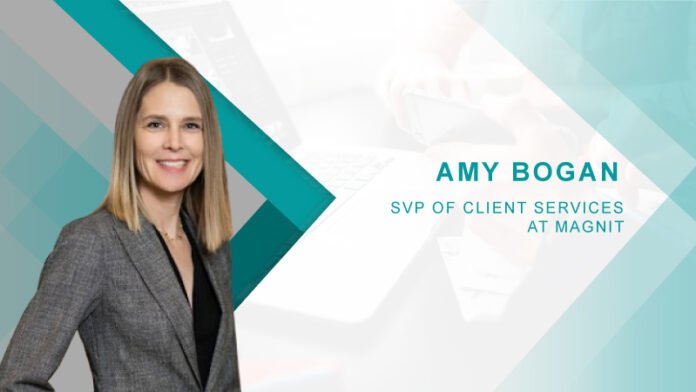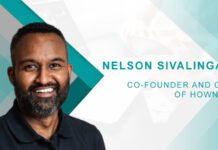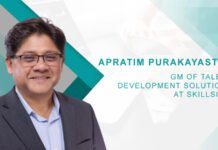Welcome to HRTech Cube, Amy! Can you share a bit about your professional journey and what led you to your current role as SVP of Client Services at Magnit?
I have been at Magnit for almost 18 years, starting out as a senior program manager and expanding my responsibilities over time at the company. I have nearly two decades worth of experience in HR tech and came into my current executive position through years of experience integrating hands-on program management with strategic program design and execution skills to lead my teams.
A few of my success stories include the implementing new contingent workforce programs, transformation of existing programs, as well as successful expansions of existing program solutions. Prior to joining Magnit where I’ve spent majority of my career, I worked as an account manager in the staffing industry where I managed the largest client in the San Francisco region to deliver best-in-class contractors.
During economic slowdowns, businesses must balance cost-cutting with maintaining a strong workforce. What are some of the biggest challenges companies face in achieving this balance?
One of the biggest challenges companies face during economic slowdowns is balancing immediate cost-cutting needs with the long-term health of their workforce. While reducing headcount may seem like the fastest way to cut expenses, it often leads to unintended consequences and challenges—such as critical skills gaps, reduced productivity, and increased costs when rehiring becomes necessary. These impacts can outweigh the initial savings.
Redeployment is often an underutilized strategy for retaining talent. How can businesses effectively implement redeployment to maximize workforce potential?
On average, it takes companies at least six months to break even on a new hire, making external hiring both time-consuming and costly. By redeploying existing employees into open roles, organizations can reduce these risks while enhancing cost savings and improving workforce retention. Leveraging technology, such as AI, allows businesses to quickly match skilled employees with internal opportunities, minimizing hiring delays and ensuring operational continuity. This proactive approach not only preserves institutional knowledge but also creates a dynamic talent pipeline—enabling companies to retain valuable workers, avoid the high costs associated with external recruitment, reduce turnover-related expenses, and maintain productivity.
Benefits play a crucial role in employee retention, especially in uncertain times. What innovative or cost-effective benefit strategies have you seen make a real impact?
Offering benefits that employees truly value can be a game-changer for retention. Core benefits like healthcare, retirement plans, paid time off, and work-life balance options remain essential for attracting and retaining talent, especially as labor markets become more competitive and uncertain. Providing these benefits not only meets employees’ needs but also reinforces their sense of security and loyalty to the organization. Partnering with a leading Employer of Record (EOR) to deliver high-quality benefits in a cost-efficient way allows companies to offer comprehensive benefit packages while managing compliance and reducing administrative burdens.
For contingent and contract workers specifically, flexibility is a benefit that is not always afforded with full time work. But, these employees can choose temporary contracts that work for them at a certain point in their career and life, which may include flexible work arrangements such as remote work.
Direct sourcing is gaining traction as a way to reduce hiring costs while improving workforce quality. What are some best practices for companies looking to implement or optimize direct sourcing?
To implement or optimize a direct sourcing program, companies should invest in technology-powered platforms that match candidates to roles based on their skills, experience, and past performance. These tools streamline hiring, improve workforce planning, and reduce administrative burdens. Additionally, providing a personalized, seamless hiring experience that reflects the company’s values enhances employer branding and helps attract top talent. Partnering with experts to design and manage a direct sourcing strategy can further ensure long-term success and scalability.
How can organizations ensure they are making strategic workforce decisions that drive long-term resilience rather than just short-term savings?
Organizations can drive long-term resilience by adopting strategic workforce practices that go beyond short-term cost-cutting. While workforce reductions may offer immediate savings, they often lead to skills gaps, decreased productivity, and higher rehiring costs. By focusing on proactive, cost-effective approaches, rather than reactive, cost-cutting approaches, organizations can balance immediate financial pressures with the need to maintain a strong, adaptable workforce for the future.
In your experience, what industries or business models benefit the most from a flexible workforce approach during economic downturns?
The industries that benefit most from a flexible workforce approach during economic downturns include healthcare, technology, finance, and retail. This is because these sectors often face fluctuating demands that require adaptable staffing solutions. By leveraging a flexible workforce, these industries can maintain operational efficiency while controlling costs and remaining agile.
What personal strategy do you follow when advising clients on building a cost-effective yet high-performing workforce?
There are a few strategies that I tend to recommend, one of the first being to evaluate the specific skills required for each role and identify job descriptions where lower-cost resources can be effectively leveraged. When engaging third-party labor, prioritize partners that can handle higher volumes and offer volume discount rates to reduce overall spending. Exploring talent availability in lower-cost markets is another crucial step to optimize labor expenses without compromising quality. Additionally, investing in upskilling programs allows companies to redeploy existing talent to meet evolving internal needs and projects. Lastly, establishing early career programs can provide a pipeline of fresh talent at a lower cost while fostering long-term workforce development.
What advice would you give to business leaders navigating today’s unpredictable labor and economic landscape?
I would tell business leaders today to look to flexible workforce models that shift with the organization based on factors such as labor needs. This way, employers can augment their workforce in real-time, when and where specific skillsets are needed.
Looking ahead, what trends do you foresee shaping the future of workforce management and talent retention?
I anticipate the continued rise of hybrid work arrangements, along with growing demand for contract and consultant labor. The need for AI expertise will also increase, though the specific skills required may evolve as technology advances. To support talent retention, I expect HR leaders to prioritize upskilling initiatives, such as management training for senior leadership. Finally, organizations will place greater emphasis on fostering an engaging employee experience and strong company culture because when employees are happy, they’re more likely to stay.

Amy Bogan , SVP of Client Services at Magnit
Amy Bogan joined Magnit in 2007 and serves as Senior Vice President of Client Services. She plays a crucial role in developing and implementing strategies, providing world-class delivery, and driving innovative solutions for her clients globally. Her clients include Fortune 500 companies across technology, life sciences, and financial services. Amy has 20 years of experience in contingent workforce management and a proven history of delivering best-in-class client satisfaction. She focuses on continuous program expansion, optimization, compliance, and cost management through the use of state-of-the-art VMS and MSP solutions.












